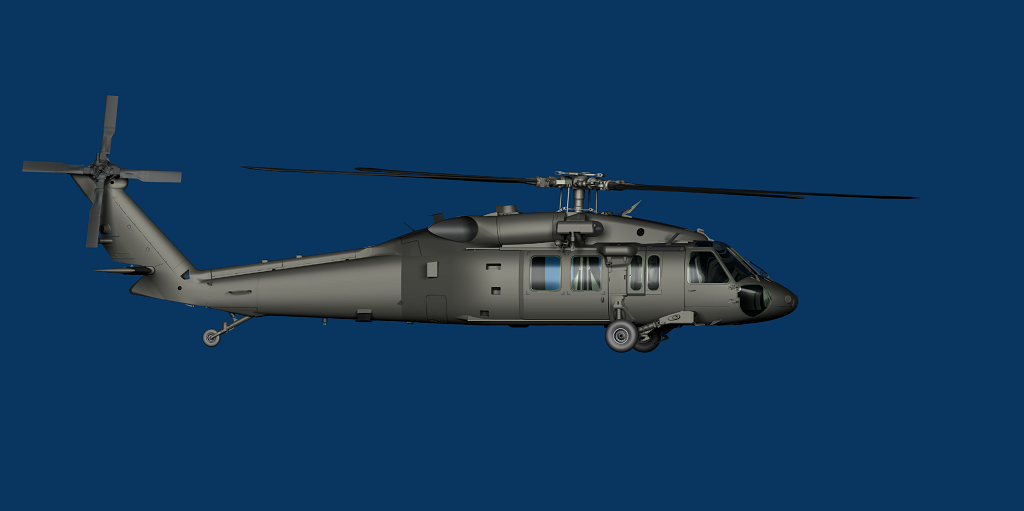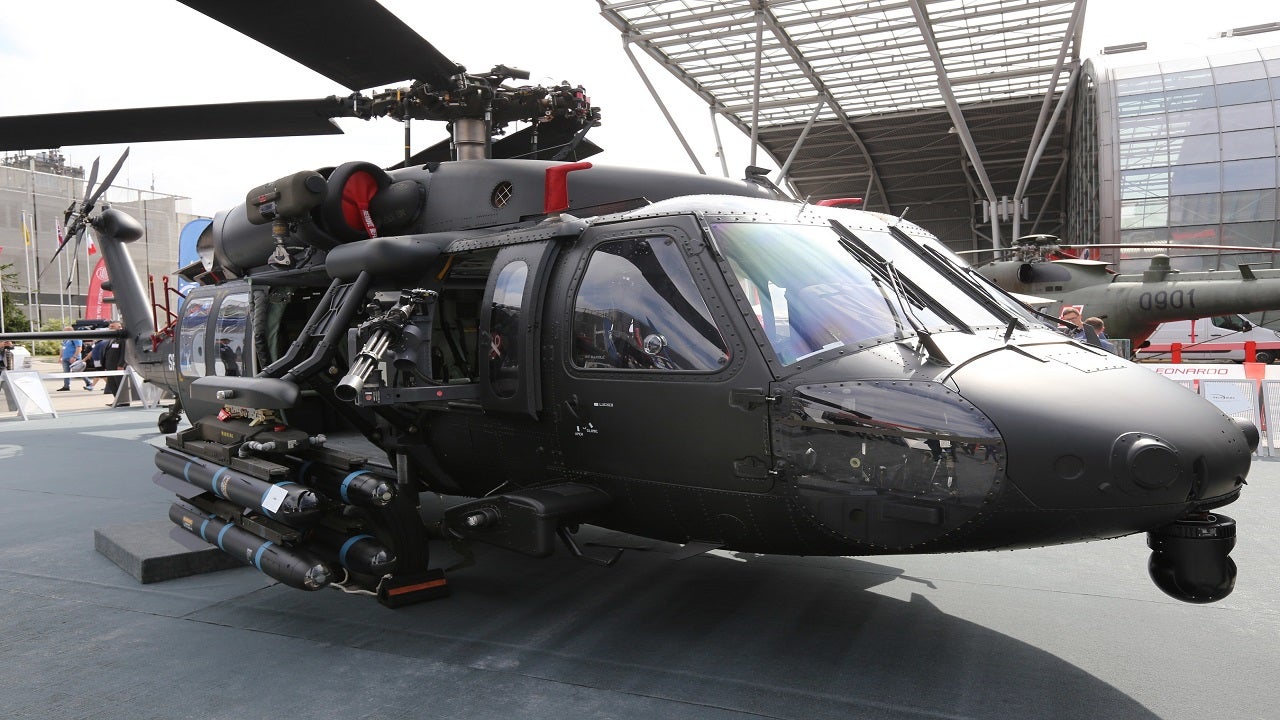Sikorsky S 70: Revolutionizing Tactical Operations with Cutting-Edge Technology
Sikorsky S 70: Revolutionizing Tactical Operations with Cutting-Edge Technology
Blog Article
High-Performance Multi-Role Rotorcraft Featuring Advanced Cabin Technologies and Integrated Sensing Unit Solutions
The world of rotorcraft innovation has seen significant improvements in current times, specifically in the world of high-performance multi-role rotorcraft outfitted with sophisticated cockpit technologies and flawlessly incorporated sensor systems. These developments have not only increased the functional abilities of rotorcraft yet have actually also substantially affected modern-day aeronautics operations on numerous fronts. From enhanced objective flexibility to boosted operational effectiveness, the convergence of advanced cabin innovations and incorporated sensing unit systems has introduced a brand-new period of opportunities for rotorcraft applications. In the complying with conversation, we will discover the advancement of rotorcraft modern technology, look into the realm of sophisticated cockpit technologies, and check out the implications of incorporated sensor systems on the functional convenience and performance of modern rotorcraft.
Development of Rotorcraft Innovation
The development of rotorcraft modern technology has been noted by significant innovations in aerodynamics, materials, and propulsion systems, shaping the abilities and performance of modern rotorcraft. Aerodynamic improvements have actually boosted the performance and ability to move of rotorcraft, enabling for increased speed, dexterity, and security throughout flight (sikorsky s 70). Innovations in products, such as using composite products and advanced alloys, have resulted in lighter yet stronger rotorcraft structures, improving general performance and longevity. In addition, improvements in propulsion systems, consisting of extra effective engines and cutting-edge propulsion modern technologies, have actually allowed rotorcraft to accomplish greater altitudes, faster rates, and greater hauls.
These advancements have not only changed the abilities of rotorcraft but have additionally expanded their applications throughout different sectors, consisting of military, business, and emergency solutions. The continual evolution of rotorcraft modern technology remains to drive innovation in the area, pressing the boundaries of what is possible and shaping the future of vertical trip.
Advanced Cabin Innovations
Structure upon the fundamental advancements in aerodynamics, materials, and propulsion systems, the realm of rotorcraft technology currently shifts emphasis towards pioneering Advanced Cabin Innovations. The integration of cutting-edge technologies within the cockpit environment plays an essential duty in enhancing the operational capacities, safety and security, and effectiveness of contemporary rotorcraft. sikorsky s 70. Advanced Cabin Innovations include a broad range of attributes created to provide pilots with improved situational understanding, structured information monitoring, and instinctive control interfaces
Among the key developments in cockpit design is the execution of glass cabins, which replace typical analog determines with high-resolution display screens. These digital systems provide customizable designs, real-time information integration, and boosted readability, allowing pilots to accessibility essential details at a glance. Advanced avionics systems, such as fly-by-wire controls and increased truth display screens, are transforming how pilots communicate with the airplane, allowing for exact control and boosted decision-making capabilities.


Incorporating advanced cockpit innovations not just enhances pilot efficiency however also contributes to general objective efficiency and safety in complicated functional settings. By leveraging state-of-the-art innovations within the cabin, rotorcraft makers are setting new standards for operational excellence and mission success.
Integrated Sensing Unit Solutions
With the evolution of rotorcraft innovation, the combination of sophisticated Integrated Sensing unit Solution has come to be vital in enhancing functional efficiency and safety and security. These Integrated Sensing unit Solutions incorporate a large selection of technologies that supply important data for various functions such as navigation, security, targeting, and ecological tracking. By perfectly incorporating sensing units like radars, video cameras, lidar, and infrared systems into rotorcraft, operators can take advantage of enhanced situational awareness, enhanced goal capacities, and decreased pilot workload.
One key benefit of Integrated Sensor Solutions is their capacity to collect real-time information and supply workable insights to pilots and mission drivers. Advanced radar systems can find and track targets over long ranges, allowing for early danger this link discovery and reliable action planning. In addition, integrating infrared and electro-optical electronic cameras enables rotorcraft to conduct reconnaissance and surveillance goals with accuracy and precision.
Basically, the combination of advanced sensing unit technologies into rotorcraft not only enhances operational efficiency yet also contributes substantially to general goal success and staff security. As rotorcraft remain to advance, the function of Integrated Sensing unit Systems will undoubtedly remain at the center of advancement in the aerospace sector.
Functional Adaptability and Effectiveness
Enhancing operational convenience and efficiency in rotorcraft is an all-natural progression from the combination of innovative Integrated Sensing unit Equipments. By leveraging the insights and information supplied by these innovative sensing unit systems, rotorcraft can maximize their efficiency throughout different goals and environments.
Functional convenience includes the capacity of rotorcraft to adapt to various duties and situations effectively. With advanced cockpit innovations and incorporated sensing unit systems, rotorcraft can flawlessly shift between jobs such as search and rescue, clinical emptying, security, and more. This flexibility enhances the rotorcraft's ability to fulfill varied functional requirements without requiring extensive reconfiguration.
Effectiveness in rotorcraft operations is critical for making the most of mission performance and resource use. Integrated sensor systems play a critical function in boosting operational performance by supplying real-time data on climate condition, surface mapping, target monitoring, and more. This information enables pilots to make informed decisions promptly, optimize flight courses, conserve fuel, and boost total objective productivity.
Influence On Modern Aviation Workflow

In addition, the combination of sophisticated sensing units helps with improved objective preparation and execution, making it possible for rotorcraft to do a vast array of tasks with boosted accuracy. From search and rescue procedures to aerial firefighting and law enforcement objectives, the capacities of you could try this out modern rotorcraft equipped with sophisticated cabin modern technologies and integrated sensor systems are unparalleled.
Moreover, the effect of these advancements extends beyond operational efficiency to cost-effectiveness and sustainability. By enhancing flight courses, gas intake, and upkeep timetables, high-performance rotorcraft geared up with sophisticated cockpit technologies and sensing units contribute to reducing operational costs and ecological influence, making them vital properties in contemporary air travel procedures.
Verdict
Finally, the high-performance multi-role rotorcraft with sophisticated cockpit technologies and integrated sensing unit systems represents a substantial evolution in aeronautics technology. These innovations improve operational flexibility and efficiency, inevitably influencing modern-day aeronautics procedures in a favorable means. The integration of these advanced modern technologies enables enhanced capabilities and performance in different goal scenarios, showcasing the continued development of rotorcraft technology in the aeronautics market.
The world of rotorcraft innovation has seen significant developments in current times, specifically in the realm of high-performance multi-role rotorcraft equipped with innovative cockpit technologies and seamlessly integrated sensing unit systems. From enhanced goal adaptability to improved functional efficiency, the convergence of advanced cockpit technologies and incorporated sensing unit systems has actually ushered in a new age of possibilities for rotorcraft applications. In the adhering to discussion, we will explore the advancement of rotorcraft technology, dig into the realm of sophisticated cabin innovations, and take a look at the ramifications of incorporated sensing unit systems on the functional versatility and performance of contemporary rotorcraft.
"/>
Report this page